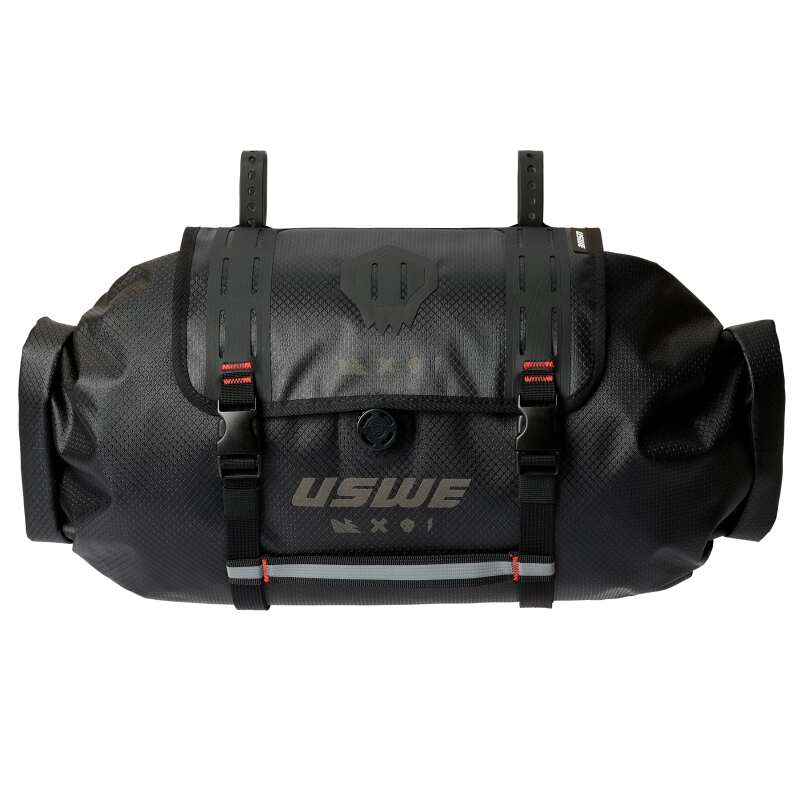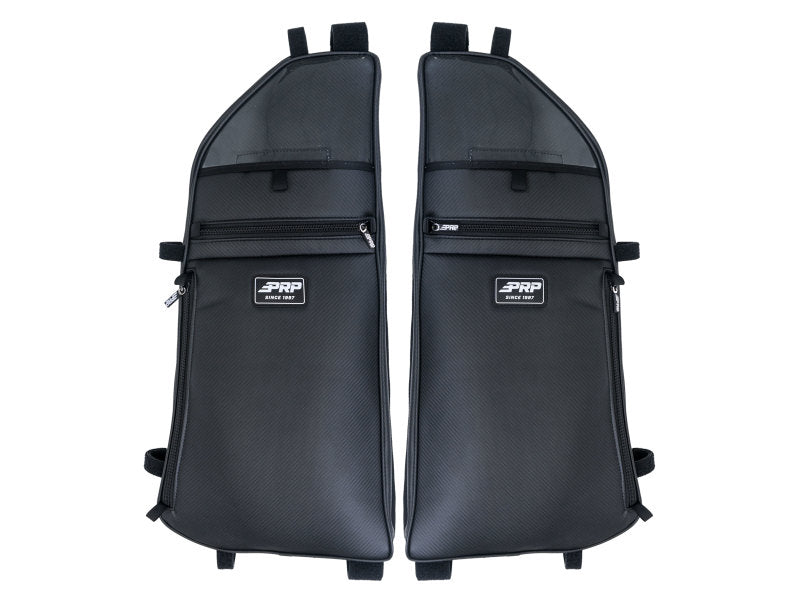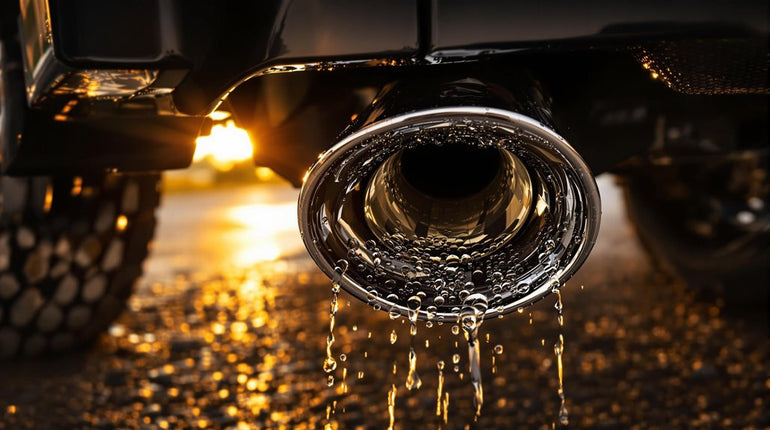A truck’s exhaust tip shapes how the engine sounds and works. You can pick from light aluminum tips or tough stainless steel ones - both look good but last different lengths of time. You can set up your exhaust as a single pipe, two pipes, or change everything from the catalytic converter back. Each setup changes how much power you get and how your truck sounds. Getting it right means making sure everything lines up and fits together well.
Key Takeaways
-
Stainless steel and titanium muffler tips offer the best durability and sound quality while maintaining aesthetic appeal over time.
-
Cat-back exhaust systems provide an optimal balance of improved sound, enhanced performance, and legal compliance for most trucks.
-
Wider exhaust pipes combined with specialized tips create fuller, deeper sounds while improving overall exhaust gas flow.
-
Proper installation requires correct positioning near the axle, incremental tightening, and thorough sealing to prevent leaks.
-
Regular maintenance, including rust prevention and prompt repairs, ensures optimal sound quality and sustained performance benefits.
Understanding Muffler Tip Materials
Picking the right muffler tip material for your truck matters a lot if you want it to work well, last long, and look good.
The main materials each have their own good points: aluminum is light and fights off rust well, while stainless steel is tough and keeps its shine. Carbon fiber tips look sporty and handle heat very well - they’re made with a carbon outer layer wrapped around stainless steel. Titanium exhaust tips offer a unique blend of lightweight durability and distinctive color options. Custom exhaust solutions can dramatically improve your truck’s overall performance and sound quality.
Chrome and black-coated steel tips cost less but need more care to keep looking nice. The material you pick affects both how long your tip will last and how it matches your truck’s style, so it’s worth thinking about carefully before you buy.
Choosing The Right Exhaust Style
The right exhaust style is a key choice for truck owners who want better performance and sound. When picking exhaust types and checking if they fit, owners need to think about different setups. An air intake upgrade can complement your exhaust system for maximum horsepower gains.
Single exhausts are cheaper and work well with bigger pipes and smooth bends, while dual exhausts give more power by using two pipes and separate mufflers. Crossover pipes help balance pressure and flow in dual exhaust setups. Cat-back systems hit a sweet spot - they swap out parts from the catalytic converter back while keeping the truck legal.
For the biggest power boost, full systems like header-backs change everything. Each setup has its own mix of sound, power, and how hard it is to put in, so it’s important to pick one that matches what you want and what your truck needs.
Sound Enhancement Options
Want your truck to sound better? You can make several changes that improve both sound and power. By looking at how sound moves through the exhaust and making smart tweaks, you can get the rumble you want while keeping your truck running well.
-
Put in new mufflers that let exhaust flow better and make deeper sounds.
-
Add wider exhaust pipes to help gases move faster and create fuller sounds.
-
Add special exhaust tips that shape the sound to what you want. Megaphone tips can amplify your truck’s sound with their distinctive funnel design.
-
Add a cold air intake to work with your exhaust changes and make the engine sound better.
Installing high-flow filters can boost engine efficiency while complementing your sound enhancements.
You can make these changes one at a time or do them all together - each part helps create the final sound.
Most truck owners find that changing the muffler gives them the best sound for their money while keeping their truck legal.
Performance Benefits
Performance exhaust parts help trucks run better by letting exhaust gases flow more freely. When exhaust flows better and faces less resistance, engines can work at their best, giving more power and strength. The smoother flow helps the engine burn fuel better and work with less stress.
When combined with other engine upgrades, better exhaust systems can help save fuel, usually around 1-2 percent less gas used. Regular inspection helps identify issues with harmful exhaust fumes before they become dangerous.
Strong materials like stainless steel last longer and don’t rust. Using premium engine oil helps protect exhaust components from carbon buildup and corrosion. Using two exhaust pipes instead of one helps even more by splitting up the exhaust flow.
These improvements help the engine last longer, deliver power better, and stay cool when working hard.
Installation Best Practices
Installing truck mufflers the right way makes a big difference in how well they work. You need to plan carefully, pick the right parts, and put everything together correctly to get the best sound control and exhaust flow.
Following what the maker says and leaving enough space helps avoid shaking and parts hitting each other.
Steps for the best results:
-
Check your truck details and make sure you have the right parts before starting.
-
Put the muffler close to the axle, lined up straight with the truck bottom.
-
Put up the hanging parts and brackets loosely first to check how everything fits.
-
Use exhaust sealer and tighten everything step by step.
Picking the right size muffler and tailpipe is really important for a good fit and top performance.
Using the right tools and working safely helps avoid common problems like parts not lining up or exhaust leaks.
Maintenance and Cleaning Tips
Keep your truck’s muffler in good shape by checking it often for damage like cracks, holes, and rust spots. Look at it carefully with your eyes and use a wire brush to clean off dirt and rust that builds up over time.
To stop rust from forming, put special heat-safe paint or coating on parts that might rust. When cleaning, be gentle and don’t use rough tools that could hurt the muffler. You can use a strong water spray to wash away dirt, and make sure to clean around all the parts where pieces connect.
Watch out for black smudges, weird noises, or if your truck starts using more gas than usual. If you spot any problems, get a mechanic to look at it right away and fix what’s wrong. Regular maintenance of your exhaust system will help ensure its longevity and optimal performance.
Popular Muffler Tip Designs
Picking the right muffler tip can make your truck look better and run smoother.
Today’s most-liked designs mix good looks with better performance, giving truck owners many ways to style their vehicles.
-
Round tips are still the most common choice, with options like angled cuts and smooth edges that look great and help exhaust flow better.
-
Six-sided tips give trucks a bold, new-age look, making them great for custom truck projects.
-
Tips cut at different lengths and angles catch the eye while helping exhaust gases move more freely.
-
Double-walled tips look sharp and help control exhaust sound.
The metal you choose matters too.
You can pick from regular stainless steel to fancy carbon fiber - each type has its own strengths in how long it lasts and how it performs, while still looking good.
Legal Considerations
You need to know the rules about changing your car’s exhaust before getting started. The law says you can’t add parts that make your exhaust louder or let you control the noise level. Both national and local laws set clear limits on exhaust noise.
|
What’s Required |
National Rules |
Local Rules |
|
Noise Limits |
Required for all cars |
Different in each area |
|
Safety Checks |
EPA approved |
Yearly tests |
|
Changes Allowed |
No bypass parts |
Must match factory parts |
|
Rule Checks |
Federal rules apply |
City/town laws |
|
Fines |
EPA tickets |
Set by each state |
Car owners must keep their exhaust as quiet as the factory made it and avoid changes that make more noise than stock parts. New laws like New York’s SLEEP Act show that police are cracking down on loud exhausts, so following the rules is more important than ever.
Common Installation Mistakes
Putting in truck muffler tips the right way takes careful work to avoid mistakes that can hurt how well they work and how safe they are.
When done right, the muffler will work its best and last longer.
Watch out for these common mistakes:
-
Putting the muffler in backward - if you don’t follow the arrows showing
Customization and Modifications
Truck owners can choose from many ways to upgrade their exhaust systems to make their trucks run better and look cooler. Basic changes start with swapping the rear pipes, while bigger upgrades replace everything from the engine to the back. Different pipe layouts like Y-shapes, X-shapes, H-shapes, or straight pipes each change how the truck sounds and runs.
|
Change Type |
What It Does |
|
Cat-back System |
Better airflow + decent power boost |
|
Axle-back System |
Small airflow boost + better sound |
|
Header-back System |
Best airflow + biggest power boost |
|
Better Headers |
Helps engine breathe better |
|
X/H-pipe Setup |
Spreads power more evenly |
To get the best results, plan exhaust changes step by step, looking at pipe size, how pipes bend, and how air moves through them. When you also adjust the engine computer settings, these changes can give you more power, stronger pull, and better fuel use.
Frequently Asked Questions
How Long Does It Take for Exhaust Tips to Develop Natural Blue Coloring?
Keeping exhaust tips clean and shiny takes regular work. The blue tint forms naturally from heat, but you can help it look better by wiping off dirt and soot. Check tips monthly for rust spots and buildup. Use a soft cloth with metal cleaner to scrub gently. Let tips cool fully before cleaning to avoid burns. Clear away debris that could block airflow or cause uneven coloring.
Can Winter Road Salt Permanently Damage Chrome Exhaust Tips?
Road salt used in winter can eat away at chrome exhaust tips and ruin them for good. To keep them looking shiny, you’ll need to clean them often and add a protective layer - otherwise, the salt will slowly destroy the chrome finish.
Do Exhaust Tips Affect Fuel Consumption in Diesel Trucks?
Exhaust tips, no matter what they’re made of, won’t change how well your diesel truck runs or how much fuel it uses. They mainly make your truck look better and help control heat when the diesel filter cleans itself.
Conclusion
Proper muffler tip selection and installation represent critical factors in enhancing both truck performance and sound characteristics. Through careful consideration of materials, design specifications, and legal requirements, achieving the desired exhaust note while maintaining functional efficiency becomes attainable. Gexhaust professional installation techniques, combined with appropriate customization options, guarantee ideal airflow dynamics and sound modulation. Regular maintenance and compliance with local regulations assure sustained performance benefits. Contact us for expert guidance on your truck’s muffler requirements.





